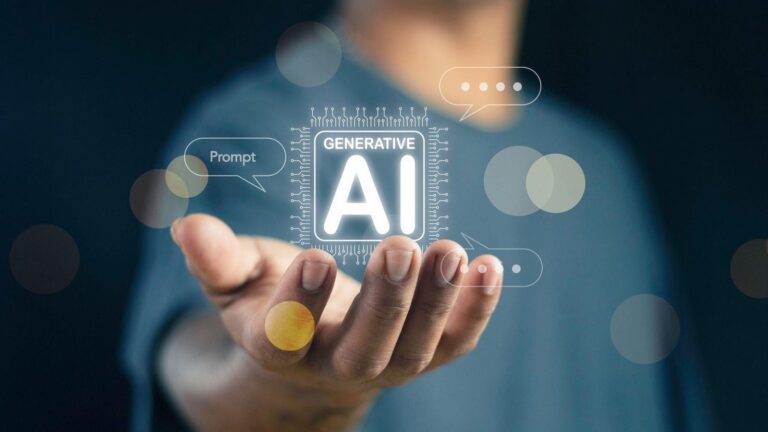What is the most well-known generative AI?
Artificial intelligence (AI) has been in the spotlight for years, but it’s the subset of generative AI that’s really captured people’s attention lately. If you’ve spent any time on the internet in the past year, you’ve likely heard of ChatGPT, DALL-E, or Midjourney. But what exactly is generative AI, and which are the most well-known models?
Let’s begin.
The generative AI revolution
Generative AI is an artificial intelligence system that can create new content, such as text, images, music, and even code. These AI models learn from vast amounts of existing data to generate new and original things. It’s like teaching a computer to be creative. And computers learn incredibly fast.
Current champion: OpenAI’s GPT
When it comes to claiming fame in the world of generative AI, the name that stands out above the rest is OpenAI’s GPT (Generative Pre-trained Transformer) – this powerful model is the brains behind ChatGPT, which has become a celebrity in its own right.
But why is GPT so famous? Let’s take a closer look:
- Pioneering Innovation: GPT was one of the first companies to showcase the true potential of generative AI in a way that was accessible to the masses, turning what seemed like science fiction into reality.
- Versatility: From writing essays, giving speeches, creating images to debugging code, the range of capabilities of GPT is staggering – it’s like having a Swiss army knife of AI tools at your fingertips.
- Mainstream adoption: By making ChatGPT available for free, OpenAI democratized access to advanced AI. Suddenly, everyone from students to CEOs were experimenting with AI-generated content.
- Constant evolution: With each iteration (GPT-3, GPT-4 and beyond), the model becomes more powerful and capable, continually pushing the boundaries of what’s possible.
candidate
GPT may be the best known, but it’s not the only player: the world of generative AI is filled with impressive contenders.
- Google’s Gemini: A strong competitor to GPT, it offers multimodal capabilities and better performance.
- Claude from Anthropic: Known for their focus on ethical AI development and powerful conversational capabilities.
- Meta’s LLaMA: Facebook’s parent company has entered the fray with this open-source large-scale language model.
- Stable Diffusion by Stability AI: The go-to for many in the image generation field.
- Microsoft Copilot: Integrating AI assistance across the Microsoft ecosystem.
Although each of these models has its own unique features, GPT has led the way and been widely adopted, placing it at the top of the ladder of fame.
Impact and meaning
The rise of GPT and its generative AI brethren has sparked a technology gold rush as businesses rush to integrate these technologies into their processes, products, and services. AI-powered writing assistants, code generators, and even AI therapists are hitting the market.
But it’s not all smooth sailing. The rapid advancement of generative AI also raises important issues like copyright, job loss, and the spread of misinformation. As these models become more sophisticated, it becomes increasingly difficult to distinguish AI-generated content from human-created content.
What’s next for generative AI?
The field of generative AI is evolving at breakneck speed. We expect to see even more powerful and specialized models emerge in the coming years. From personalized education to advanced medical diagnostics, we are just beginning to bring generative AI to everyday life.
As for GPT, its reputation shows no signs of fading. OpenAI is constantly pushing the boundaries, so we can expect future versions to be even more capable and, dare we say, amazing.
A future supported by AI
GPT is currently making a name for itself in the world of generative AI, but the competition is fierce and the landscape is constantly changing. What’s clear is that generative AI is not a passing fad, but a technological revolution that’s here to stay.
As we navigate this brave new world of AI-generated content, one thing is certain: today’s most well-known generative AI may only be the tip of the iceberg. What’s truly exciting is imagining what these technologies will enable in the future. So fasten your seatbelts: the AI journey has just begun.


